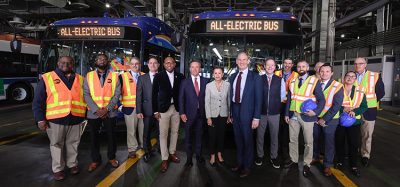NO2 reduction five times greater in London compared to rest of country
- Like
- Digg
- Del
- Tumblr
- VKontakte
- Buffer
- Love This
- Odnoklassniki
- Meneame
- Blogger
- Amazon
- Yahoo Mail
- Gmail
- AOL
- Newsvine
- HackerNews
- Evernote
- MySpace
- Mail.ru
- Viadeo
- Line
- Comments
- Yummly
- SMS
- Viber
- Telegram
- Subscribe
- Skype
- Facebook Messenger
- Kakao
- LiveJournal
- Yammer
- Edgar
- Fintel
- Mix
- Instapaper
- Copy Link
Posted: 17 August 2020 | Sam Mehmet (Intelligent Transport)
In 2016, London’s air exceeded the hourly legal limit for nitrogen dioxide for over 4,000 hours. In 2019, this fell to just over 100 hours – a reduction of 97 per cent.


The Mayor of London, Sadiq Khan, has published evidence which shows the scale of reduction in toxic NO2 since he took office in 2016. He revealed that the reduction has been five times greater in central London than the national average.
The new data is being submitted as part of London’s response to the Environment Food and Rural Affairs Committee’s (EFRA) call for evidence scrutinising the Government’s air quality strategy.
London has also seen additional improvements in air quality during the coronavirus lockdown as traffic fell to around half pre-lockdown levels. As London starts to recover, Khan said the challenge will be to eradicate air pollution permanently.
The submission also showed that:
- “London, with some of the most complex air pollution problems in the UK, can achieve WHO PM2.5 targets by 2030, but Government is still refusing to include these as legally binding targets for the entire country in the Environment Bill
- “The Mayor’s plans to improve air quality could avoid 295,000 new cases of disease and 1.1 million hospital visits by 2050. This would lead to an estimated £5 billion in savings for the NHS
- “Action to improve air quality can also deliver wider benefits: for instance the requirement for new London taxis to be Zero Emission Capable led to private sector investment of over £300 million and the creation of over 1,000 new jobs in Coventry. Plans to transform London’s bus fleet to zero emissions will help secure 3,000 green jobs in the North, Scotland and Northern Ireland
- “At the same time successive Governments have failed to live up to their promises. The Clean Air Strategy was released more than 18 months ago and has not yet borne any visible fruit, and the Environment Bill does almost nothing to help reduce air pollution in the future.”
Khan said: “I’m proud of the dramatic improvement in London’s air quality since I was elected as Mayor, with reductions in roadside NO2 in the central London Ultra Low Emission Zone that are five times greater than the national average.
“Today’s response shows the scale of improvement that is possible when policies are ambitious and city leaders have proper powers they can use. National Government now needs to match London’s level of ambition and provide additional powers through the Environment Bill to cities across the country.
“Here in London, we are not complacent and know there is still more to do. Pollution isn’t just a central London problem, which is why in October 2021 I am expanding the ULEZ to the North and South circular, improving the lives and health of Londoners for years to come. I want to go further, but can only do this with the Government’s support and a bold new Environment Bill.”
Since taking office, Khan has:
- Introduced the world’s first Ultra Low Emission Zone in 2019, resulting in 13,500 fewer polluting vehicles driving in the zone every day and toxic NO2 levels falling by 44 per cent in the zone
- Delivered 12 Low Emission Bus Zones, cutting bus-related NOx emissions by an average of 90 per cent in the zone
- Worked with schools in some of the most polluted areas of London to reduce children’s exposure to air pollution
- Transformed London’s taxi fleet by no longer licensing new diesel taxis. There are now over 3,000 electric taxis on London’s streets
- Set up a £48 million scrappage fund available to help small businesses, low-income and disabled Londoners switch to cleaner vehicles
- Almost tripled the amount of protected space for cycling
- Pledged to make the capital carbon neutral by 2030, 20 years earlier than the Government’s target.
Related topics
Air Quality, Alternative Power, Fleet Management & Maintenance, Sustainable Urban Transport, Vehicle & Passenger Safety
Related cities
London
Related organisations
Environment Food and Rural Affairs Committee (EFRA)
Related people
Sadiq Khan







